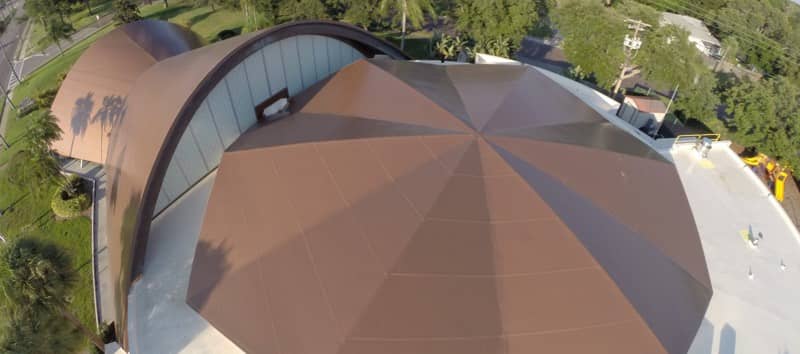 During a recent webinar, an attendee asked the following question:
During a recent webinar, an attendee asked the following question:
Most of our buildings are over 50 years old with many changes in plane on the surface. Most are BUR with mineral cap sheets. What would be a better system when replaced?
Our answer: When it comes to a replacement system we recommend that you first focus on the solution, as the purpose of the membrane is to protect that solution. There are many options afforded you when using a KEE membrane to solve the issues. Flexibility and versatility are needed to traverse multiple planes and I assume multiple deck types. You may also have circumstance where you can just cover the existing cap sheets. I would recommend that you enlist the services of one of our representatives for a free inspection and analysis.
But let’s go back a minute; understanding the technologies behind your roofing material and how those technologies withstand common threats to roof performance is crucial. Before you select a roofing material for your new roof, use this chart to understand the pros and cons of how each material measures up against threats for failure.
|
|
BUR |
Modified Bitumen |
EPDM |
TPO |
PVC |
KEE |
|
UV |
UV breaks down the bitumen - leading to cracking and crazing. |
UV breaks down the polymers - leading to cracking and crazing. |
Good UV resistance - extreme UV and heat can dry out the oils however. Seam adhesives can also degrade over time. |
Stabilizers are added to increase UV resistance, but it can negatively impact fire resistance - hard balance to find. |
UV rays break down PVC - plasticizer bond allowing plasticizer to migrate resulting in cracking and difficult repair. |
Excellent UV resistance. Due to ‘miscible’ polymer, additives are easily accepted and bond breakdown is prevented. |
|
Impact / Puncture |
Starts out with good resistance, but as UV breaks down roof the impact / puncture resistance decreases. |
Starts out with good resistance, but as UV breaks down roof the impact / puncture resistance decreases. |
Non-reinforced has poor puncture resistance but good impact resistance. |
Fair puncture resistance and impact strength. |
Fair puncture resistance and impact strength. |
Excellent puncture and impact resistance. Adding thickness can increase dynamic impact resistance. |
|
Chemical |
Chemicals soften bitumen and thus accelerates breakdown. |
Chemicals deteriorate modifiers and then the bitumen itself accelerating breakdown. |
Poor resistance; long-term exposure can lead to eventual softening and deterioration. |
Minimal chemical resistance; known for swelling. |
Good chemical resistance; some chemicals accelerate breakdown of PVC - plasticizer bond though. |
Excellent chemical resistance; inherent to product makeup. |
|
Wind |
Fair to moderate resistance. Weakness is “peel” resistance to first ply. |
Moderate to good resistance because it can be mechanically fastened. |
Poor to fair resistance; not heavy duty fabric. |
Fair to good resistance; not heavy duty fabric. Unproven long term adhesives that add risk. |
Good to excellent resistance due to some heavier duty base fabrics and proven adhesives. |
Good to excellent resistance; heavy duty base fabric and proven adhesives. |
|
Fire |
Poor resistance and high maintenance costs to protect. Aggregate required to restrict flame spread. |
Poor resistance and high maintenance costs to protect. Aggregate required to restrict flame spread. |
Poor resistance; Flame retardant versions significantly increase cost. |
Poor resistance; retardants difficult to add without effecting other properties. |
Good to excellent resistance; Flame retardants easily compound and inherent flame suppressant chlorine. |
Good to excellent resistance; retardants easily compound and inherent flame suppressant chlorine. |

-1.png?width=500&height=271&name=FiberTite_Only%20(500px%20wide)-1.png)

-1.png)